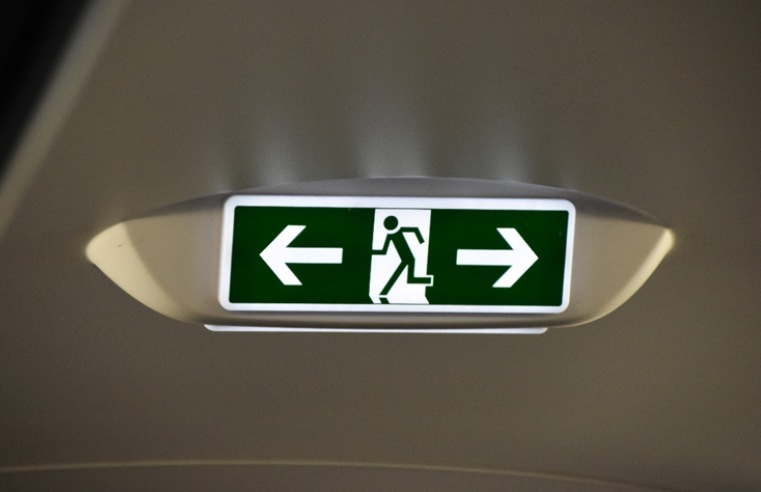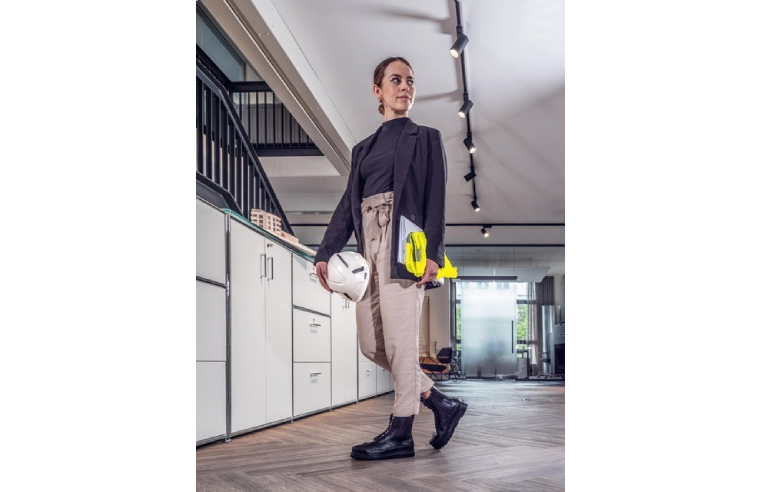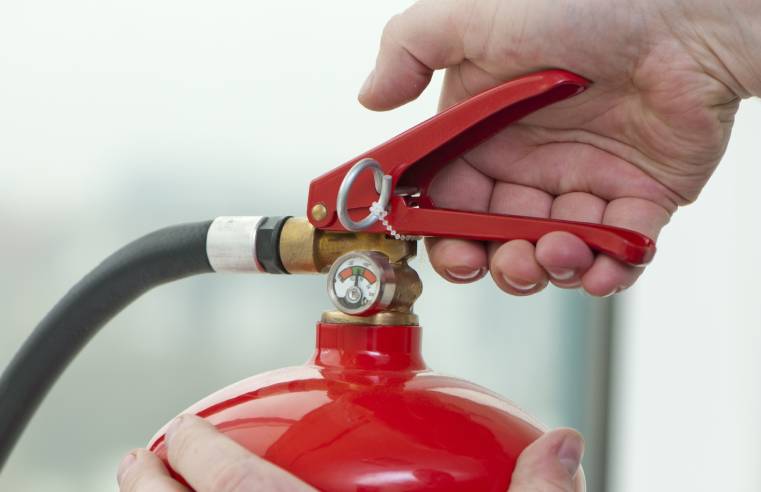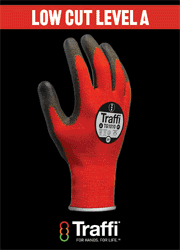Learn about what constitutes a fire door and how they can protect you and your premises with London Fire Solutions.
Fire doors are an integral part of any building's passive fire protection system. Passive Fire Protection efforts are delivered through the structure of a building to provide stability. It’s used in walls, ceilings, and floors to compartmentalise the buildings into areas of manageable risk. Protection can come through the materials in which the building is constructed or added to enhance its resistance.
How do fire doors work?
Fire doors work to ‘compartmentalise’ the fire or smoke in the room where it started. Fire doors work to save lives and stop the flame spread in a building giving occupants more time to escape and find a safer escape route. Fire Safety Order states that ‘all emergency routes and exits must lead as directly as possible to a place of safety’.
Fire doors compartmentalise smoke and fire by utilising intumescent strips. The strips can be installed either around the door or around the inside of a frame. When the strips are exposed to significant heat, they expand to seal the gap between the door and the frame, preventing the smoke or fire from travelling. Other elements of the door must also be fire-rated. This could include the hinges and handles.
Which type of fire door is right for me?
Fire doors are part of fire compartmentation, a system that also relies on ceilings, walls, and floors to help contain a fire. To protect people from building fires, it’s essential to understand which type of fire door works best in certain situations. Internal and external fire doors offer the same level of protection for different scenarios.
The two most common types of fire doors are FD30 rated doors and FD60 rated doors. FD30 fire doors give at least 30 minutes of fire protection when installed according to guidelines, and FD60 fire doors give at least 60 minutes of fire protection. FD60 doors are around 54mm thick and are most commonly used for commercial purposes. FD30 doors are 45mm thick. They’re perfect for domestic doors as 30 minutes is plenty of time to evacuate a domestic building.
A professionally installed fire door that is fully certified for fire protection will delay the spread of fire and ultimately save lives. Internal and external fire doors work on containing a fire to one room or ‘compartmentalising’ it, making it easier to control and extinguish. Internal fire doors and screens can be made in a choice of styles and designs, with additional features available to suit the design of your property. Communal screens are another internal fire protection option. A door leaf can be incorporated into a glazed screen using standard frame sections and comply with fire certification for up to 60 minutes.
Where are fire doors required?
The layout of the building determines which fire doors will be most effective. Several regulation-approved options can work, with FD30 and FD60 front entrance and communal screens, steel doors, frame armour systems, and high-security doors.
Fire doors are a legal requirement in all non-domestic properties, such as businesses, commercial properties, and public buildings. They are also required in residential flats and houses of multiple occupancies.
Fire doors are a great way to add extra protection against fire in your home. In many homes in the UK, fire doors are not a legal requirement and are considered a preference.
There are, however, some exceptions;
- Any new build or home renovation with three or more floors must have fire doors fitted to every habitable room leading from a stairwell. This can also apply to loft conversions where an extra floor has been added to a two-storey building.
- Any door leading from your home to an internal garage must be a fire door. In most situations, FD30 doors are sufficient.
Any block of flats should have had a fire risk assessment carried out at some point before occupants move in. This will detail which doors are required to be fire doors.
As standard procedure, legislation states:
- Every flat within a block of flats or HMO should have a fire door fitted onto the communal area entrance.
- Flats located on floors 4.5m above ground level must have a fire-rated door fitted between all habitable rooms and the front door.
- Ground floor flats do not usually need internal fire doors as long as each room has an accessible way to escape. They still need a fire door to be fitted at the entrance if the front door opens onto a communal area such as a corridor.
FD30 doors should be used for flats.
What Is The Law Around Fire Doors?
Article 17 of the Regulatory Reform (Fire Safety) Order 2005 (RRO/FSO) makes it a legal requirement that fire doors are correctly installed and maintained to be fit for purpose. Recent changes in legal requirements have shifted the responsibility of fire safety of a building from the fire authorities to whoever has day-to-day control of the premise.
Internal Fire Doors
An internal fire door is designed to divide a building into compartments in the event of a fire, creating an escape route for the length of time highlighted by the FD rating.
External Fire Doors
External fire doors are situated at the end of this escape route. It must be signposted and open from the inside. As long as it is never blocked, it can be classed as a fire door.
What Is A Fire Door Inspection?
A fire door inspection is a vital part of ensuring fire safety. In basic terms, a fire door inspection is an assessment of the state of your fire doors - including the material they’re made from, the sturdiness of the handles, and the structure of the frame. It’s wise to employ a professional to conduct your inspection as they need to be competent in recognising faults and offering solutions.
Are Fire Door Inspections Legally Necessary?
Under the Regulatory Reform Fire Safety Order 2005, fire doors need to be inspected and maintained annually at the very least. Depending on the type of building, the person responsible for managing the property can determine how often fire safety inspections should occur. In areas with heavy traffic, such as hospitals and colleges, monthly checks are more sensible. Working fire doors are a legal requirement in any non-domestic property and play an enormous role in fire stopping.
Fire doors are an essential element of your passive fire protection efforts in commercial and some domestic environments. For more information on fire prevention methods or to speak to a professional, visit us at London Fire Solutions.
Originally published Friday 5th November 2021. Amended Monday 14th February 2022 to include another backlink.






























